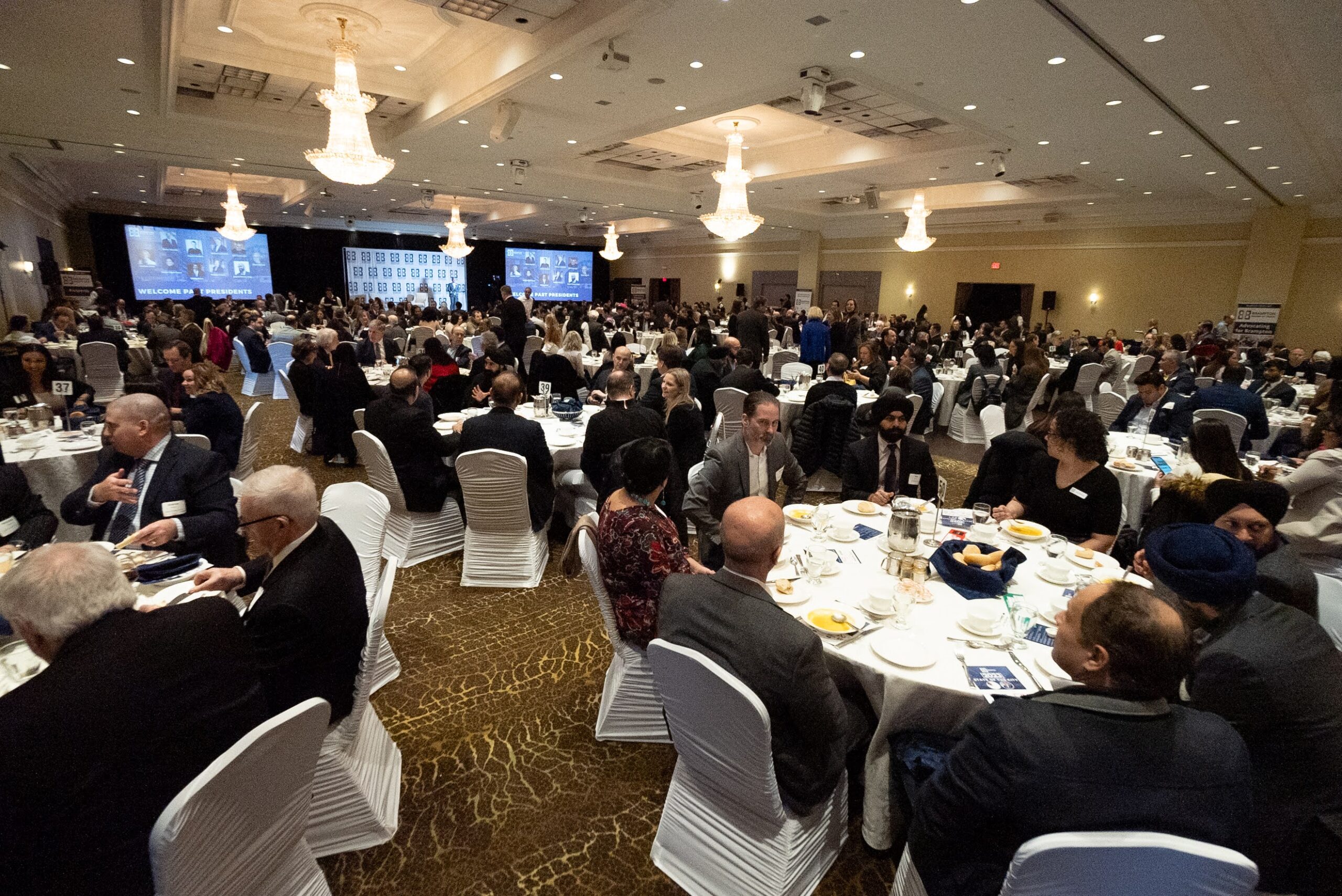
With the federal election on the horizon, Canada’s three major parties—Liberals, Conservatives, and NDP—have unveiled what sound like very similar policies. Tax cuts, GST cuts, affordable housing plans. But there are some key differences. My intention is to provide a comparison of where each party stands on key issues as of now.
With the cost of living being a major priority for Brampton, as evidenced by our Business Confidence Index, I will be focusing the analysis on four main areas: income tax, investments and savings, affordability measures, and housing.
Income Taxes
Tax cuts for the middle class have been a centrepiece policy for each of the top three parties, with slightly differing approaches among them. The Liberals, led by Mark Carney, propose a modest one-point cut to the lowest income tax bracket, reducing it from 15% to 14%. They estimate this will benefit over 22 million Canadians, with two-income families saving up to $825 annually. The Liberals have also moved to scrap the consumer carbon tax, a common point of criticism levied by the Conservatives.
The Conservatives, under Pierre Poilievre, promise a larger 2.25-point reduction in the lowest income tax bracket, lowering the rate to 12.75% by 2027-28. They project $900 in annual savings for individuals and $1,800 for dual-income families. The plan is funded by cuts to bureaucracy, consultants, and foreign aid. Critics note that in both the Liberals and Conservative tax cuts, the biggest gains go to highest earners.
Acknowledging this, the NDP, led by Jagmeet Singh, takes a slightly different approach—raising the basic personal amount (the amount before which one must pay taxes) to $19,500 . This would return $505 to individuals earning between $19,500 and $177,882. In addition, they pledge to permanently remove the GST from essentials like groceries and diapers, saving a family of four around $448 per year, according to their estimates.
Investments and Savings
On capital gains, the Liberals have confirmed they will not pursue the original Liberal proposal of hiking the inclusion rate on capital gains (the portion of capital gains earnings that is taxable), first pitched in the federal budget last year. They have yet to propose any additional reforms.
The Conservatives, on the other hand, are taking this a step further by proposing a Canada First Reinvestment Tax Cut, eliminating capital gains tax if profits are reinvested in Canadian businesses before the end of 2026, with a possibility of making it permanent. This is designed to boost domestic investment and free stranded capital towards more productive uses. Poilievre also pledges to raise the tax-free savings account limit to $12,000 annually if invested in Canadian companies.
The NDP takes a firm stance in the opposite direction, pledging to reverse what they call the “Carney/Poilievre capital gains tax cut”, arguing current policies unfairly benefit the wealthy.
Affordability Measures
Though affordability is top of mind this election, the parties differ on what’s most important to make affordable.
The Liberals plan to eliminate the GST on new homes up to $1 million for first-time buyers.
The Conservatives go further, vowing to remove GST on new homes under $1.3 million—potentially saving buyers up to $65,000. He also commits to keeping the retirement age at 65, allowing working seniors to earn up to $34,000 tax-free, and extending RRSP eligibility to age 73. Facing critique about his position on dentalcare, pharmacare, and childcare, he has stated that a Conservative government will not touch these policies.
The NDP takes the broadest approach, proposing to eliminate GST on essential items—including groceries, household bills, and Canadian-made vehicles. This is aimed at relieving cost-of-living pressures, especially for low-income families. The NDP platform also includes strong social commitments, such as doubling the Canada Disability Benefit and raising the Guaranteed Income Supplement (GIS) to eliminate poverty among seniors.
Housing
Housing is a key battleground issue in this election.
The Liberals have announced an ambitious “Build Canada Homes” plan to double residential construction. It includes a new federal entity to build affordable housing and remove bureaucratic barriers to building.
The Conservatives focus on incentives rather than direct building. In addition to axing the GST on homes under $1.3 million, the Conservatives seek to push municipalities to free up land and fast-track permits by withholding federal funding from lagging municipalities and reward high-performing municipalities. The challenge with this approach is that federal funding to municipalities tends to be quite small, about 1.5-3% of total revenue.
The NDP aims to help first-time buyers by leveraging the CMHC to offer low-interest, public-backed mortgages, and building rent-controlled homes on public land. Their approach explicitly centres affordable homes, rental protection, and public support whereas the Conservatives look to stimulate the private market. The Liberals take inspiration from both, incorporating an industrial approach to homebuilding across the housing spectrum.
Diverging Economic Philosophies
Each party’s platform reflects a distinct economic worldview:
- The Conservatives prioritize tax relief and leaner government, with a belief that market-driven growth will follow.
- The Liberals blend moderate tax relief with strategic government investment in what can be called industrial policy, especially in housing.
- The NDP focuses on redistribution and social equity, using means-tested tax changes to fund benefits for working families, seniors, and people with disabilities while ensuring the wealthy do not benefit disproportionately.
In Summary
| Party | Income Tax | Investments and Savings | Affordability Measures | Housing |
| Liberals | 1% cut to lowest bracket | No change to capital gains | GST off homes <$1M | Industrial-scale homebuilding |
| Conservatives | 2.25% cut to lowest bracket | Tax cut for Canadian investments | GST off homes <$1.3M | Freeing private sector through speedier approvals |
| NDP | Raise BPA to $19.5K; GST off essentials | Higher inclusion rate for capital gains | Remove GST from essentials & Canadian-made cars | CMHC mortgages, public rent-controlled housing |
The Brampton Board of Trade will be reviewing these priorities and others with local candidates in Brampton during our candidate debates in mid-April. Should you have any questions, do not hesitate to reach out to me at vsingh@bramptonbot.com
Stay informed—and make your voice heard!
